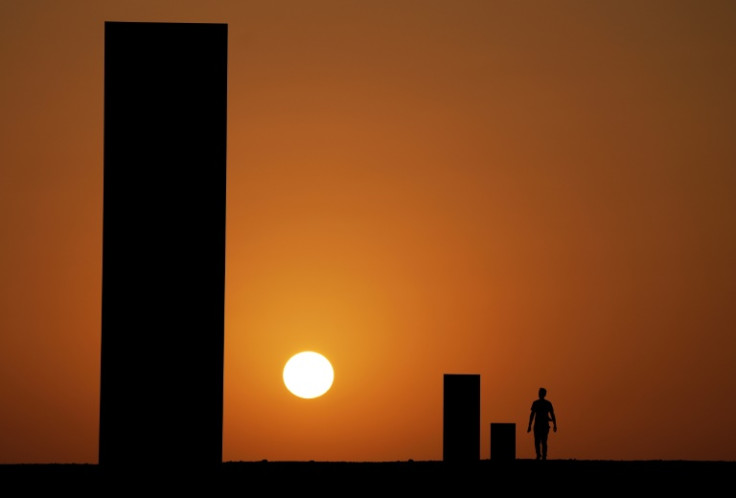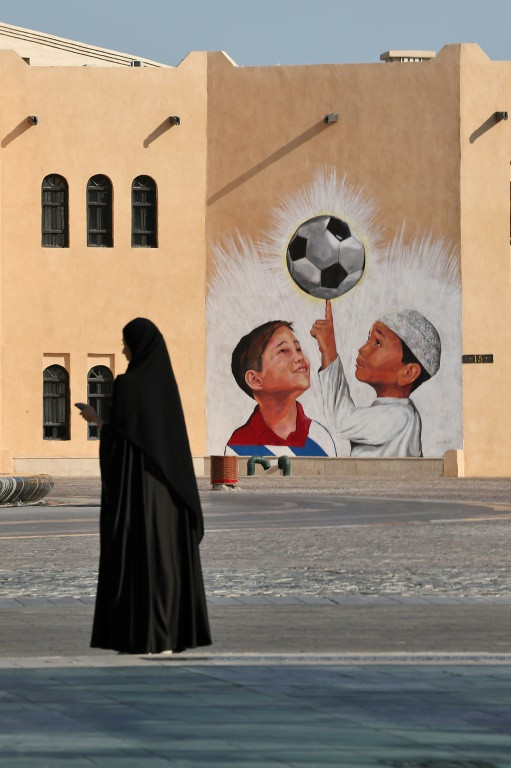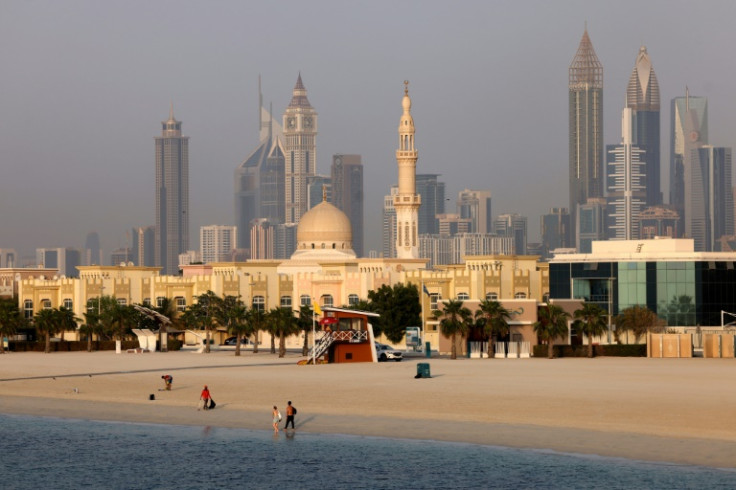It's A Long And Bumpy 4WD Ride To Qatar's Acclaimed Desert Art

Deep in the Qatari desert, security guards have a lonely time keeping 24-hour watch over one of the world's most isolated artworks, created by renowned US sculptor Richard Serra.
"On a busy day we can get 100 people," said one guard monitoring the four vertical steel plates -- each more than 14 metres (46 feet) high -- that makeup Serra's "East-West/West-East".
But when temperatures soar above 50 degrees Celsius (122 Fahrenheit) in the Brouq nature reserve, visitors are rare.
Even Qatar's art chiefs say that getting to the work -- which is spread over more than a kilometre (0.62 miles) -- is part of the challenge of appreciating Serra's installation, one of the Gulf state's big-ticket art purchases in 2014.
Qatar is gearing up to welcome more than one million people to the football World Cup which starts on November 20.
But few advertisements mention "East-West/West-East", located about 70 kilometres (43 miles) from Doha.
A four-wheel drive is needed to reach the artfully rusted steel plates, and barely a road sign points the way.

Firas al-Obisi, a Syrian working as a guide in Qatar since 2006, said his car became stuck when a sudden rainstorm turned the roads to mud as he took a Chinese tourist to the site.
"Every time I tried to get out, it just became worse. The sand was like glue," he said.
It took four hours to pull his truck out, after one of the three vehicles assisting him also became stuck.
"The artwork starts through the journey," said Abdulrahman al-Ishaq, director of public art at Qatar Museums, likening it to "a pilgrimage".
"You have to really determine that on that day you are going to go to Richard Serra," he said. "And then when you get off the road and into the desert, you have to find it."
Serra, 83, is one of America's best-known living sculptors.
His works often come by the tonne -- one weighing more than a passenger jet -- and are found around the world, from New York museums to landscapes in Iceland and New Zealand.
Sheikha Al Mayassa bint Hamad bin Khalifa Al-Thani, Qatar Museums' chairperson and sister of the emir, asked Serra to take on the desert mission after he completed "7", a more than 24-metre-tall work overlooking Doha harbour.
Round-the-clock watch over "East-West/West-East", with guards and cameras, started after vandals struck several times in 2020 and 2021.
Qatar vaunts itself as one of the most crime-free places on Earth, and authorities made at least six arrests.
"Vandalism is not really an issue in Doha, but we see it mostly in Richard Serra because when someone writes on it, a second person thinks it's okay to write on it," Qatar Museums' Ishaq said.
"Ideally the art should not be touched -- not even conserved -- because the idea is that it would rust with time. But when it gets vandalised, we have to clean" it, he said.
Doing so is "costly" and "interferes with the natural process of the artwork, how it decays", he added.
Serra's artworks are an extreme example of Qatar's huge public art investments, which have accelerated as Doha gears up for the World Cup.

More than 40 works have gone on display in parks, along roadsides and near landmarks.
They range from a 21-metre-high polished metal dugong by American pop artist Jeff Koons, to a larger-than-life blue rooster by German sculptor Katharina Fritsch that is on show in an official FIFA hotel.
It's not just the artworks, but Doha, that is on display, Ishaq noted. "This is an opportunity for us to have the spotlight."

© Copyright AFP 2025. All rights reserved.





















